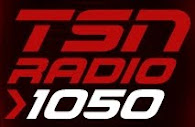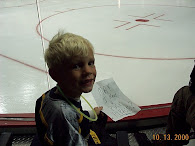Thursday, September 15, 2011
Predators Rookie Camp Series Part Four: Two Different Routes to the Same Place
Today we move into part four of our series from the Predators’ 2011 Rookie camp, we will take a look at the choices players have to make in their development process.
First we will try to give a very superficial look at several options for players before they get to the professional ranks. This is a very high level view as each system has complicated rules that we cannot explore in this piece.
In yesterday’s post, we took a look at a couple of players that had gone through the Canadian Junior A League system which has been the primary route for youth hockey players from Canada as well as the U.S. West coast to a degree. Players in the three CHL leagues are generally 16-20 years old.
In the U.S., the top youth hockey players, who don’t go the Canadian route, advance to High School hockey or Jr. A hockey (“Tier II” by Canadian Jr. A leagues and NCAA standards), and then on to the Division I Universities and Colleges. The Division I players can be 17- 24 years old, based on when they enter college.
Another option for the most elite players is the U.S. National Team Development Program, which is a division of USA Hockey and has made the entire Team USA program to become more competitive at the international level.
A third source of players are the teams and leagues in Europe and Russia that play at at the Junior level as well as the Professional ranks. A few young Europeans do play in North America but their are limits as to how many can play on each team.
In the last 20 years, the University system has become much more competitive, raising the overall level of play and there are more battles over top players between the two entities as each offer different advantages. Europeans have also become a much larger group in the North American pro ranks.
Of the 21 players in the Preds’ Rookie Camp 13 came through the CHL, five came from Europe, and three came through the College ranks.
Milwaukee head Coach Kirk Muller explained the differences in what he sees in players coming out of the CHL and Colleges. “The biggest thing is the amount of games that the Junior A players play versus college. The college guys have a lot more time to practice. Junior players play close to 70-something games.”
“That's a lot of hockey and a lot of traveling so they don't get as much practice time. They're a little more adjusted, for instance if you started in the minors in the AHL. A junior guy might have a little more of an advantage about being used to getting on the ice every day playing that many games.”
“It's a tough adjustment for college guys that way. The skill level now is not like it was 20 years ago. There's skill players in college as well as junior. But I think the big thing is the amount of games that they're used to playing.”
Two players from the States that had their choice of either system are Austin Watson and Craig Smith. They each took a different path and have strong feelings about their choices.
Watson played his pre-Junior hockey with the Detroit Compuware Ambassadors which shared a rink with the Plymouth Whalers. He initially committed to the University of Maine and was a candidate for the USTDP under 17 team but eventually decided to go the route of junior hockey when he was drafted by Windsor.
Watson explained, “I had thought about the US program and I’d seen OHL hockey living in Plymouth with the Whalers there. Being drafted by Windsor I thought it was a good opportunity for me. They had a great team and coaching staff and I thought for my development, that was the best route to go.”
Craig Smith grew up in Madison, Wisconsin and ended up playing college hockey for two seasons with the hometown Wisconsin Badgers. He played high school hockey and then went on to play for the Waterloo Black Hawks in the USHL for three seasons before going to college.
Smith explained his choice, “I never really considered Major Junior. I know it’s a great league and a lot of great players come out of it every year but I grew up around college hockey.”
“I grew up in the hometown where I played, so college hockey has always been my mindset. It really worked out for me and I thought it was a good fit and it was the right path for me to take.”
Smith was drafted as an almost twenty year old in the 2009 NHL Entry draft in the fourth round as the 98th overall pick. Watson was taken as an 18 year old in 2010 as the 18th pick in the first round.
You can’t find two more distinct experiences that that led Watson and Smith to the same rookie camp on the way to being probable future teammates at some point in their career as Nashville Predators.
More Later...
Buddy Oakes for PredsOntheGlass
Subscribe to:
Post Comments (Atom)






















No comments:
Post a Comment